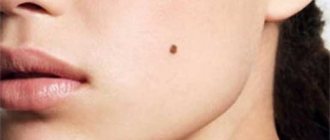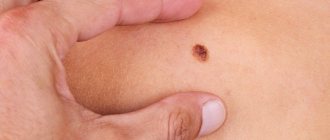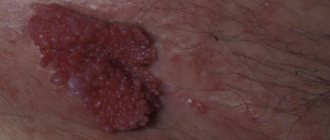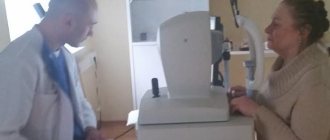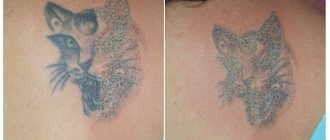- home
- About Us
- Articles
- We remove tumors. What is better: laser or liquid nitrogen?
•
•
•
April 01, 2022 to the list of articles
Moles, warts and other growths cause a lot of discomfort. It’s good that modern methods have appeared that allow you to get rid of them quickly and almost painlessly. These are laser and cryodestruction. What is their essence, and which method is better? Let's figure it out.
The procedure can be carried out in two ways:
- Nitrogen is applied to a cotton swab and applied to the skin.
- Nitrogen is delivered under the skin using a special device.
To remove the tumor, a short exposure to liquid nitrogen on the skin is sufficient. The procedure lasts no more than 30 seconds.
After it is carried out, a blister may appear on the skin, just like after a burn. The wound heals in 10-15 days. Sometimes a scar may form in its place. If the tumor has deep roots, then several procedures may be needed to remove it.
Types of warts
The most common are warts.
- Vulgar (ordinary)
. They are flat or hemispherical neoplasms of flesh color and are localized mainly on the hands. Painless, do not bleed. - Plantar
. Very dense formations that visually resemble calluses and are located on the soles of the feet. When removed, a plantar wart leaves a crater that is filled with normal tissue over time. The larger and “older” the wart is, the more painful it causes when walking and pressing. Patients often refer to plantar warts as spiny warts. - Flat youthful
. They are located mainly on open areas of the skin (including the face). More common in children and adolescents. Visually they appear as flat formations of a flesh-colored or yellowish-brown color. - Anogenital
. A group of warts found primarily on the genitals. The most common form is genital warts. Unlike other forms, the main route of infection is sexual. Anogenital warts can be transmitted even through protected sexual intercourse.
How are tumors removed with laser?
The essence of the laser effect on a tumor is that the laser beam evaporates its cells layer by layer. In this case, neighboring tissues are not injured, and the vessels are “sealed”, which eliminates the occurrence of bleeding or infection in the wound.
The procedure can last from 1 to 10 minutes. It all depends on the depth of the roots and the size of the new growths. After the procedure, a crust forms at the site of laser exposure, which dries and falls off after a few days. After about a month, the skin at the site of the neoplasm is completely renewed.
How not to make a mistake when choosing a mole removal method?
Moles or nevi are small, usually brown formations on the skin that are found in virtually every person. They can be congenital or appear during puberty, during pregnancy, menopause, after prolonged exposure to the sun or tanning in a solarium. According to their structure, moles are divided into pigmented and vascular. Pigmented nevi include freckles, flat and raised moles; melanin pigment gives them a dark color. This substance protects our skin from ultraviolet damage. People with dark skin have more of it, and people with light skin have less. Vascular moles are formed due to abnormalities in the development of skin capillaries; they have a characteristic red color. Their shape can be very different - from a speck to a noticeably protruding nodule.
Usually nevi do not cause much concern, but in some cases there are indications for mole removal. This must be done if the mole is located on the face, spoils the appearance and causes severe psychological discomfort. Also subject to removal are moles located in places subject to mechanical damage - under the hair, on the neck, in the armpits, under the breasts, in the groin and other areas where they are rubbed by clothing or injured during a haircut or shaving. In cases where a mole begins to become inflamed, itchy, change color or increase in size, you must make an appointment with a dermatologist-oncologist. The doctor conducts an examination, prescribes a scraping, puncture or performs a dermatoscopy. This is necessary in order to promptly detect signs of degeneration of an invisible mole into a malignant melanoma tumor.
Now in St. Petersburg and other cities there are many clinics offering the removal of moles, papillomas, and warts using various methods. The most widely used methods are:
- Surgery with a scalpel;
- Cryodestruction or freezing with liquid nitrogen;
- Electrocoagulation;
- Laser mole removal;
- Radio wave surgery.
Surgical removal using a scalpel
- a simple and widespread way to get rid of a mole. Before the operation, it is necessary to undergo tests for infections transmitted through the bloodstream - HIV, syphilis, hepatitis B and C. The duration of the procedure depends on the size of the nevus and the qualifications of the doctor.
The advantages of this method are its simplicity and affordable cost. Disadvantages - pain, high trauma, the need for cosmetic stitches, and a scar may remain after removal. With this method, the removed mole is sent for histological examination. I recommend this method if there is the slightest doubt about the good quality of your mole.
Laser mole removal
– evaporation of a nevus by heating tissue up to 300 degrees Celsius with a narrowly directed laser beam of a strictly defined wavelength. Most often, this method is used to remove moles that protrude above the skin. The advantages of this method are speed of removal, low likelihood of bleeding, and relative painlessness.
The recovery period after laser mole removal takes from two weeks to a month. The duration of this period differs little from other methods. At this time, it is worth limiting your time in the sun and using special hydrophilic cosmetics. Contraindications and complications typical for laser removal are described in detail here.
Cryodestruction or removal of moles with liquid nitrogen
– with this method, the tumor is frozen to a temperature of -190ᵒC, which causes tissue death. This method is recommended for removing raised and hanging moles. At the site of the removed nevus, a crust forms, under which healthy tissue grows.
The disadvantages of this method include high trauma and a long recovery period, as well as the lack of the possibility of histological examination. During cryodestruction, it is not always possible to accurately control the depth of freezing; the procedure may need to be repeated if the tumor is not completely removed.
Electrocoagulation
– with this method, an electric current is applied to the mole, which literally burns out the tumor tissue. This is one of the most common methods of removing skin tumors. As in previous cases, a depression covered with a crust remains at the site of the tumor.
The disadvantage of this method is the high risk of scar formation and a long recovery period.
Removing moles using radio wave surgery
–
the most modern and safe method
.
As a result of directed radio wave exposure, the thinnest layer of tissue around the nevus “boils” and evaporates. The procedure itself lasts no more than 15 minutes, the mole is removed without hospitalization and the need for stitches. All removed material is sent for histological examination.
The advantages of removing moles using radio waves are minimal pain and trauma, excellent cosmetic effect, no bleeding, and rapid healing of the skin. I would also like to note that in our clinic since 2011, not a single complication has been registered after removal using the radio wave method.
We invite you to make an appointment with an experienced oncodermatologist and, if indicated, remove moles using the radio wave method using modern equipment.
What to choose: cryodestruction or laser?
Both procedures can quickly and almost painlessly rid you of tumors. However, cryodestruction is only effective when it comes to small moles or warts.
If the tumor is large in size or has deep roots, then it is better to give preference to a laser. Cryodestruction is not used if the tumor is located on the mucous membranes.
So the laser in this case is the only possible option. As for the cost, laser procedures will cost a little more.
Reasons for appearance
The root cause of the appearance of any warts is only one: the presence of the human papillomavirus in the human blood. HPV is the most common group of viruses on the planet: according to various sources, various strains of papillomavirus are present in the blood of most of the world's population.
Different strains of papillomavirus can cause tumors. These can be either benign warts, condylomas or papillomas, or malignant formations.
That is why the appearance of any skin tumor, as well as a change in its appearance or size, is a good reason to consult a dermatologist. What if what seems like a harmless wart is a symptom of a much more serious disease?
Laser removal of warts
Laser wart removal is widely used by dermatologists. The tumor is “evaporated” layer by layer by a directed laser beam of specified parameters. First, the doctor uses local injection anesthesia.
The risk of relapse is determined by the location, type of tumor and depth of the lesion. When the procedure is carried out professionally, vulgar and flat warts do not recur after removal; tissue restoration occurs within 2-4 weeks, most often without scarring.
Laser removal of plantar warts does not always bring good results. The intervention site is constantly injured when walking, which can cause severe discomfort and even pain, as well as slow healing. The formation of scar tissue is possible. In this regard, not all specialists use laser removal of plantar warts; some doctors prefer to remove plantar warts with nitrogen.
Number of required procedures
To eliminate a small wart or mole, it is enough to do 1 procedure. Often a session takes no more than 10 minutes, and only when working with a large area does the process last for half an hour or even an hour. During this time, the specialist completely removes the unwanted formation.
In rare cases, dermatologists offer a course of 2-3 sessions, the required interval is at least 7 days. This option is used for patients with sensitive skin, especially if it is necessary to treat a large number of moles or papillomas.
More often, removal in several stages is carried out for highly overgrown formations. If all rules of procedure and care are followed, there is no need for prophylaxis.
Electrocoagulation
Electrocoagulation uses a device that generates an electric current. The electrode or loop that the doctor manipulates becomes very hot. Essentially, the wart is “burned out,” which leads to its destruction. Vessels coagulate under the influence of high temperatures.
This method is considered the most painful of those listed - anesthesia is almost always required. Unfortunately, after electrocoagulation, warts sometimes recur, and the appearance of scars and pigment spots is possible. That is why electrocoagulation is used to remove tumors on open areas of the skin only when other methods are not available.
Prices for removal of warts and other tumors
Due to the sharp change in the ruble exchange rate and logistics problems with suppliers, PLEASE CHECK CURRENT PRICES AND AVAILABILITY OF DRUGS BY PHONE
Dermatology
- Primary appointment with a dermatologist (trichologist) (without dermatoscopy)
1200 rub.
- Repeated appointment with a dermatologist (trichologist) (without dermatoscopy) (no more than 2 months from the previous appointment)
900 rub.
- Dermatoscopy
450 rub.
- Examination of the scalp under magnification (trichology)
800 rub
- Wood's lamp examination
250 rub.
- Histological examination of the material
2300 rub.
Removal of skin tumors
- Removal (radio wave destruction) of milia, papillomas, small benign neoplasms, pinpoint angiomas, acne elements, molluscum contagiosum:
- 1 element
500 rub
- from 10 elements
400 rub
- From 20 elements
300 rub
- From 50 elements
200 rub
- Removal of a neoplasm on the eyelid – 1 element
900 rub.
- Removal of telangiectasia – 1 sq.cm (radio wave destruction)
900 rub.
- Removal of benign neoplasms (keratoma, fibroma, etc.) - 1 element (radio wave destruction or cryodestruction). Anesthesia included in the price
:
- D
1100 rub.
* - D = 0.5 - 1 cm
1500 rub.
* - D > 1 cm
1900 rub.
* - Removal of palmar warts – 1 element. Anesthesia is included in the price.
1000 rub
- Removal of plantar warts – 1 element (up to 0.5 cm). Anesthesia is included in the price.
1200 rub.
- Removal of plantar warts – 1 element (more than 0.5 cm). Anesthesia is included in the price.
1500 rub.
- Radiosurgical removal of benign melanocytic and non-melanocytic formations (moles, wen, etc.) - 1 element. Anesthesia included in the price:
- D
1500 rub.
* - D = 0.5 - 1 cm
2000 rub
* - D > 1 cm
2500 rub.
* - Treatment of an area of the scalp for radiosurgical removal of a tumor
400 rub
- * For simultaneous removal of 5-9 formations - 5% discount; For simultaneous removal of more than 10 formations - 10% discount
Anesthesia for extractions
- Application anesthesia (cream, spray)
200 rub
- Injection anesthesia (1 ampoule)
600 rub
Scar tissue treatment
- Treatment of scar tissue (cryodestruction) – area up to 1.5 cm
1500 rub.
- Intramuscular injection of the drug (without the cost of the drug)
500 rub
- Intralesional injection of the drug in the scalp area (without the cost of the drug)
1500 rub.
- Intralesional injection of the drug (without the cost of the drug)
800 rub
- Diprospan
850 rub.
Laboratory research
- Collection of biological material
300 rub
- Cytological examination of scrapings and impressions from the surface of the skin and mucous membranes
1100 rub.
- Microscopy and culture for parasitic fungi (nails)
1700 rub.
- Microscopy and culture for parasitic fungi (skin)
1700 rub.
- Parasitic fungi, microscopic examination of skin samples
1100 rub.
- Parasitic fungi, microscopic examination of nail samples
1100 rub.
- Demodex test, microscopy (skin, abscess discharge)
1100 rub.
- Demodex test (eyelashes)
1100 rub.
- Sowing of wound discharge and tissues for flora and sensitivity to antimicrobial drugs
1400 rub.
- Culture of microflora, determination of sensitivity to antimicrobial drugs and bacteriophages
1500 rub.
- Sowing of wound discharge and tissues for flora and sensitivity to antimicrobial drugs according to the extended spectrum
2100 rub.
Advantages and disadvantages of liquid nitrogen removal:
Important: Benefits:
- No anesthesia required (no need to give an injection)
- The method can be used repeatedly on the same tumor
- No bleeding after removal
- Rarely leaves scars
- Good results for small pedunculated formations (papillomas)
Flaws:
- You cannot take a biopsy (microscopic analysis) of a remote lesion
- The need for repeated use of liquid nitrogen, especially for large tumors and located in areas with a thick layer of epidermis (on the palms and soles).




